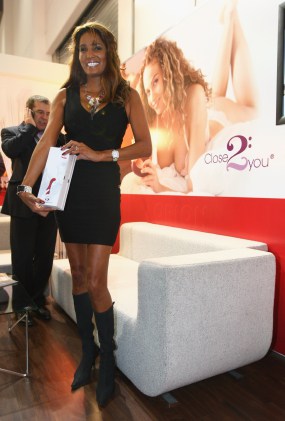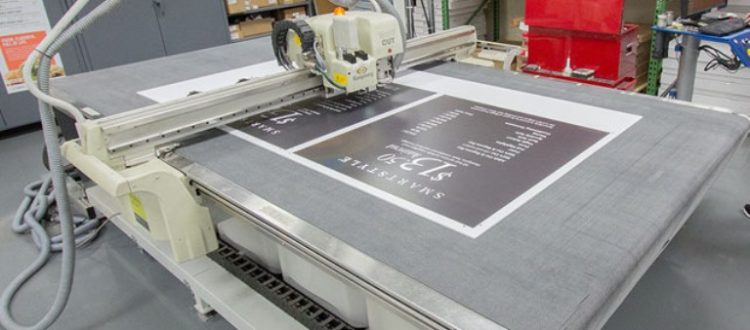First off, let me define what we mean when we say “display banner printing.”
Don’t they all display something? Yes, they do, but when I am referring mainly to retail or trade show graphic displays.
Banner Printing Materials used
Generally speaking there are two basic materials used in display banner printing. The first and most common is vinyl banner. Less common, because of pricing, is the fabric banner. There are many variations of both types though which I’ll attempt to explain over the next few hundred words.
 The printing can be accomplished with vinyl letters and logos through screen-printing, or digitally printing. It is typically done in a gloss or matte finish. Short runs of banners are usually either vinyl-lettered or digitally imprinted, but as the quantities get into the hundreds, screen-printing is often a more cost-effective option.
The printing can be accomplished with vinyl letters and logos through screen-printing, or digitally printing. It is typically done in a gloss or matte finish. Short runs of banners are usually either vinyl-lettered or digitally imprinted, but as the quantities get into the hundreds, screen-printing is often a more cost-effective option.
Another material option I didn’t mention, which is almost always screen-printed, is what is known in the industry as poly banners – short for polyvinyl. You’ll see these used frequently where the retailer has thousands of outlets, such as Burger King® or McDonalds®, for advertising the latest burger and fries sale or the like. Or at Lowes or Home Depot advertising a new product.
The vinyl displays can be done on both sides if the material has a block-out layer. Typically, the double-sided banners are of a heavier weight of vinyl material such as an 18 to 22 oz. fabric. There are, though, for interior usage mainly, some 13 oz. items that can be pressed on both sides.
The most predominant material is 13oz. gloss or matte. Typically printed on one side, it is great for low wind areas or installed on a wall where wind can push it into the wall, but not blow it like a sail, like it may if it were hung between a couple of poles. Since around 2000, outdoor displays has been done using perforated material, which has also come to be used a lot in outdoor usages as it allows around 20% of the force of the wind to pass through the fabric. This has replaced the old, unsightly method of cutting wind pockets to allow some wind to pass through and is about 400% more effective than the wind pockets were.
If you plan to exhibit your product or services in this decade, you may want to consider dye sublimation printing for your to stay ahead of the competition
Over the past decade, display banner printing has been done increasingly on cloth or fabric items which come in several different styles, most of which are printed using a dye sublimation method. It is used primarily on polyester fabrics because of their polymer content. In this method, a digital printer will press the dye onto a special paper, then utilized heat and pressure to transfer the image to the polyester material. It will not work on cotton and some other fabrics because they don’t have polymers in them. If done correctly, it should leave a brightly imprinted image that actually becomes part of the cloth.
This type of print technology an cloth is superior for many reasons including that they can be folded, washed, ironed like any ordinary printed fabric (like a shirt), and if it is a good quality print it shouldn’t fade any time soon. Cloth and fabric displays has become very popular in higher end retail stores like Nordstrom or in trade shows. Because of the bright lights in trade show arenas, many exhibitors prefer that their display is done on fabric materials as they don’t have the glare from the lights that vinyl items do; and they can be used for various displays, booth back and side-walls, hanging displays, and in many other ways, too.
There are several popular polyester fabrics used in dye-sub pressing. One popular material is stretch poly material, which can be stretched over frames to create interesting displays. Because of it’s stretch-ability, it creates a wrinkle-free display that has visual interest and attracts client views.
Another material, poly flag cloth, was specifically designed as an outdoor item, but can be used for outdoor or indoor events. This material has a nylon appearance, but can be printed using dye sublimation because it is a polyester material.
For standard cloth banners, one of the most popular items is the heavy knit poly banner material. It is the most opaque of the polyester materials. It cannot be printed on both sides, but it can be sewn together using a block-out layer between the cloth. It is not considered ideal for long term usage like pole banners would be, as it is lighter weight material than Sunbrella® or similar products.
Finally, Poly Satin is a sheer material that many clients prefer as it is an airy feeling banner and light can be seen through the graphics. It does have some color loss as well, but still has a nice presentation if it is a look you’re looking for. Poly Sheer display banner printing fabric is even more see-through and used for the same type of purpose.
Have you tried using dye sublimated fabric banners as a trade show back drop? How did it go? Share your experience in the comment form below.
Popular Posts:




